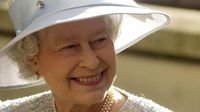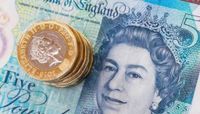On August 20, 2025, the United Kingdom witnessed a significant moment in its numismatic and royal history. The Royal Mint, the institution responsible for producing the nation’s coins, announced the release of the final batch of £1 coins featuring the portrait of the late Queen Elizabeth II. This release, which included more than 23 million coins dated 2021 and 2022, coincided with the introduction of 7.5 million new £1 coins bearing the image of King Charles III. Together, these nearly 31 million coins mark a historic transition, visually and symbolically representing the shift from Britain’s longest-reigning monarch to her successor.
For decades, Queen Elizabeth II’s likeness has been a familiar sight in pockets and purses across the UK. Her portrait has graced coins since her ascension to the throne in 1952, becoming one of the most reproduced images in global currency. But as the Royal Mint’s director of commemorative coin, Rebecca Morgan, explained to BBC, the moment has come for change. “As we release more of the King Charles III £1 coins into circulation alongside the final coins of Queen Elizabeth II, we’re witnessing the physical representation of our monarchy’s transition,” she said. “This dual release creates an exceptional opportunity for both seasoned numismatists and those new to coin collecting.”
The final Queen Elizabeth II £1 coins, especially those dated 2022, are set to become the rarest £1 denomination in active circulation. According to ITV News, these coins are now the scarcest currently in use, making them highly coveted by collectors. The Royal Mint’s move has prompted a flurry of excitement among the British public, with many urged to check their change for these rare pieces—both as a way to remember the late monarch and to potentially secure a valuable keepsake.
Despite the new arrivals, all UK coins bearing Queen Elizabeth II’s portrait remain legal tender and will continue to circulate for the foreseeable future. This decision ensures a smooth transition between the two monarchs’ coinages, preventing confusion or inconvenience for the public. As the Royal Mint stated, “All coins that show Queen Elizabeth will still be valid for spending in the UK and will continue to circulate alongside 7.5 million newly released coins bearing King Charles III.”
The introduction of King Charles III’s coins has been a gradual process. His image first appeared on UK money in 2023, but so far, only the 50p and £1 denominations have entered circulation. The new £1 coins, issued in August 2024, feature a detailed bee design on the reverse, part of a special series inspired by British plants and animals found throughout the British Isles. This fresh approach to coin design not only celebrates the country’s natural heritage but also aims to engage a new generation of coin users. The coins retain the same size as their predecessors but now display larger numbers, a thoughtful detail intended to help children learn to count.
Collectors and enthusiasts have quickly taken note of the rarity of the new King Charles III coins. Of the approximately 24.7 billion coins currently in use across the UK, only about 0.004% feature the new monarch’s portrait, according to the Royal Mint. This scarcity has made the coins especially attractive to those hoping to secure a piece of this transitional moment. Almost three million £1 coins with King Charles’ portrait were issued in August 2024, but the limited numbers ensure that each coin remains a prized find.
Rebecca Morgan, reflecting on the importance of this change, described it as a “pivotal moment in British coinage history.” She emphasized that the release of the final Elizabeth II coins and the introduction of King Charles III’s portrait on the £1 coin is more than just a matter of currency—it is a tangible sign of national continuity and change. “This release represents a pivotal moment in British coinage history,” she said. “As we release more of the King Charles III £1 coins into circulation alongside the final coins of Queen Elizabeth II, we’re witnessing the physical representation of our monarchy’s transition.”
The dual release has also been a logistical feat for the Royal Mint. Introducing almost 31 million coins into circulation is no small task, and the Mint has worked to ensure that both the final Queen Elizabeth II coins and the new King Charles III coins reach the public efficiently. The Mint’s communication has been clear: the public should check their change, not just for the chance to collect a rare coin, but also to participate in a unique chapter of British history.
For many Britons, the coins serve as more than just currency. They are a link to the past and a symbol of national identity. The Queen’s portrait on coins has become an enduring image, one that many have grown up with and come to associate with stability and tradition. The arrival of King Charles III’s portrait, while marking the end of an era, also signals the beginning of a new chapter—one that will shape the country’s coinage for decades to come.
Interestingly, the design of the new £1 coins reflects a modern sensibility. The bee motif, inspired by the flora and fauna of the British Isles, nods to the growing appreciation for the natural world and the need to protect it. The larger numbers, designed to help children learn to count, show a commitment to accessibility and education. These thoughtful details ensure that the coins are not just collectors’ items, but practical tools for everyday life.
The transition also highlights the enduring role of the Royal Mint in British society. Since its founding over a thousand years ago, the Mint has been at the heart of the nation’s monetary system, adapting to changes in leadership, technology, and public needs. With the release of these coins, the Mint once again demonstrates its ability to honor tradition while embracing innovation.
As the coins make their way into wallets and tills across the UK, the public’s response has been a mix of nostalgia, curiosity, and excitement. Some see the coins as a way to remember Queen Elizabeth II, whose reign spanned more than seventy years. Others are eager to collect the new King Charles III coins, recognizing their rarity and historical significance.
In the end, this dual release is more than just a monetary event—it’s a snapshot of a nation in transition, captured in metal and circulated with every transaction. The coins will serve as daily reminders of the monarchy’s continuity, the passing of time, and the evolving story of the United Kingdom.
With each coin exchanged, Britons are quite literally holding a piece of history in their hands—a fitting tribute to both monarchs and a testament to the enduring power of national symbols.


